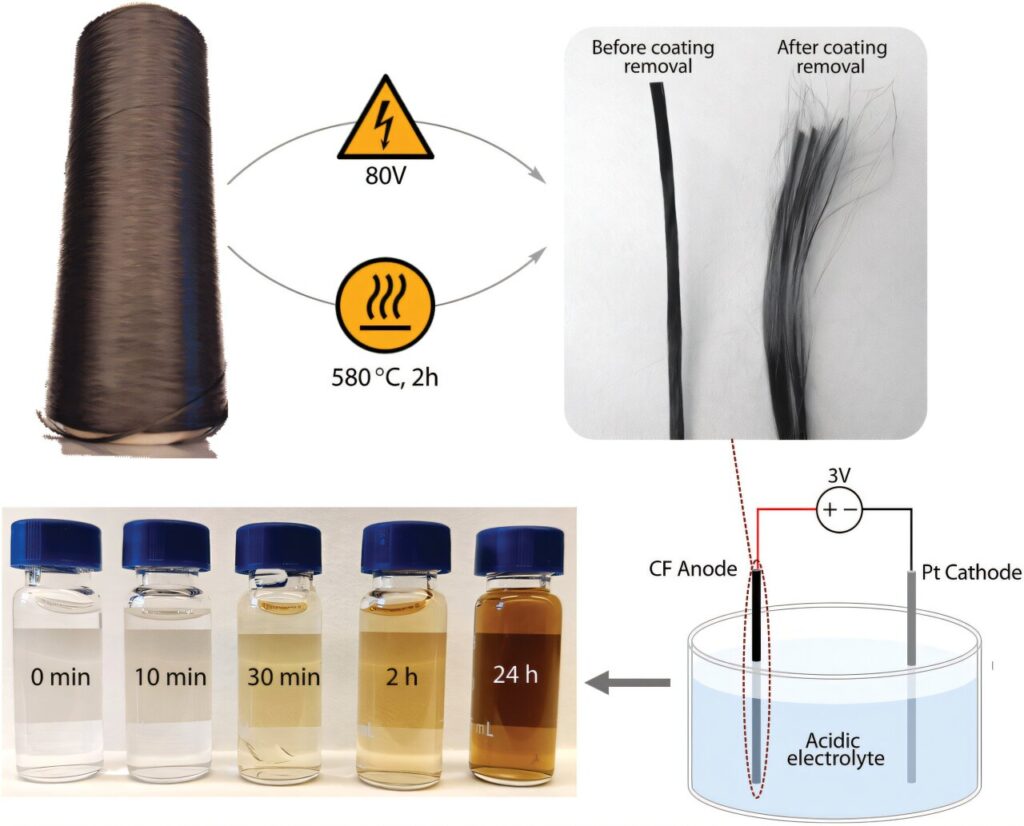Researchers in Sweden report a green alternative to reduce reliance on mining graphite, the raw source behind the “wonder material” graphene. In the journal Small, researchers at KTH Royal Institute of Technology say they have developed a reproducible and scalable method for producing graphene oxide (GO) nanosheets from commercial carbon fibers, marking a breakthrough in sustainable nanomaterial synthesis.
The process involves exfoliating carbon fibers with nitric acid, which provides high yields of one-atom-thick sheets of graphene oxide with characteristics comparable to commercial GO sourced from mined graphite.
Graphene oxide is a widely studied nanomaterial that can be used in car batteries when its thin sheets stack together, forming layers similar to graphite. It is also useful in high-performance composites, water purification and electronic devices. However, synthesis from mined graphite requires harsh chemicals and often results in material inconsistencies due to variations in graphite purity.
Richard Olsson, professor of polymeric materials at KTH, says the proof of concept was carried out with carbon fibers derived from polyacrylonitrile (PAN), a widely available polymer that undergoes high-temperature oxidation and graphitization. He says the method could be duplicated with other raw sources, such as raw sources such as biomass or forest industry sidestreams.
Olsson points to the electric vehicle battery market as one that can benefit from the new technology. “The core of graphite battery functionality can be found in the layered graphene inside, which can be harvested from commercial carbon fibers using this method,” he says.
“The future of auto manufacturing will build on battery-based power, and the question is where the graphite will be sourced? They are going to need alternatives.”

The method consists of transforming the carbon fibers using the process of electrochemical oxidation in a bath of water and nitric acid.
The bath acts as a conductor and when an electric current is sent through carbon fiber, the material begins to lose electrons, which transforms the surface in much the same way that oxidization appears as rust on a car. In this case, the transformation causes layers of nanoscale graphene oxide to peel off from the carbon fibers’ surface.
The study discovered a window in which just 5% nitric acid was perfect for creating these tiny nanosheets, ranging from 0.1 to 1 micrometer in size, with a uniform thickness of about 0.9 nanometers. Notably, the GO nanosheets synthesized this way emerged in circular and elliptical shapes, in contrast to the polygonal shapes typical of GO synthesized from natural, mined graphite.
Compared to existing synthetic methods, the new approach delivers a high yield of 200 milligrams of GO per gram of carbon fiber. This efficient conversion rate makes it viable for large-scale production, addressing a key challenge in nanomaterial synthesis, he says.
To ensure the nanosheets met quality standards, the researchers examined and measured the properties and structure of the material with a number of advanced techniques.
The study also explored methods to remove protective polymer coatings from commercial carbon fibers before oxidation, heating at 580°C for two hours and shock-heating to 1,200°C for three seconds—both proving effective. The research demonstrated that the nature of electrical conduction within the fibers plays a crucial role in the electrochemical exfoliation process.
Olsson says the next steps for the researchers include investigating biobased sources for carbon fibers, delving deeper into how the process works.


